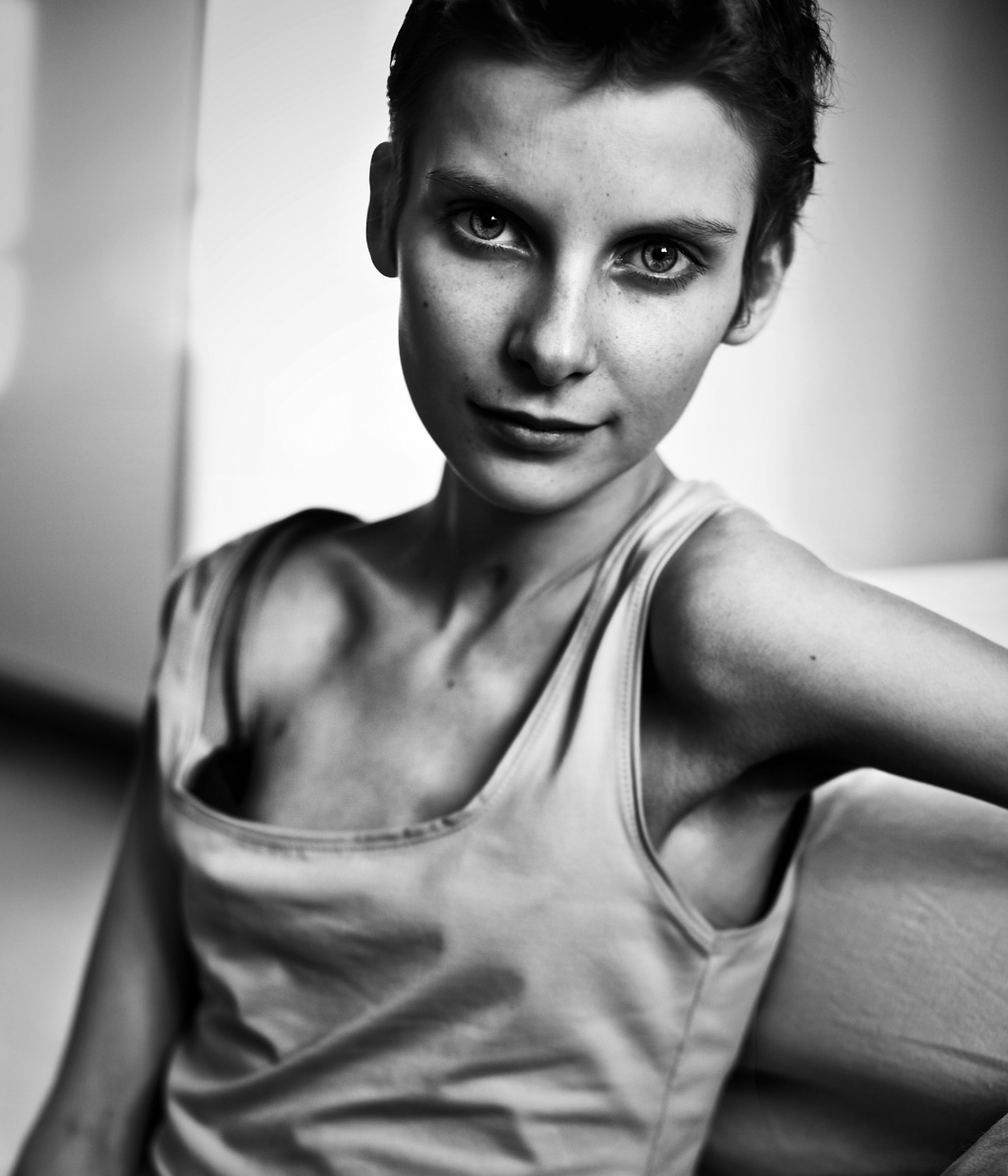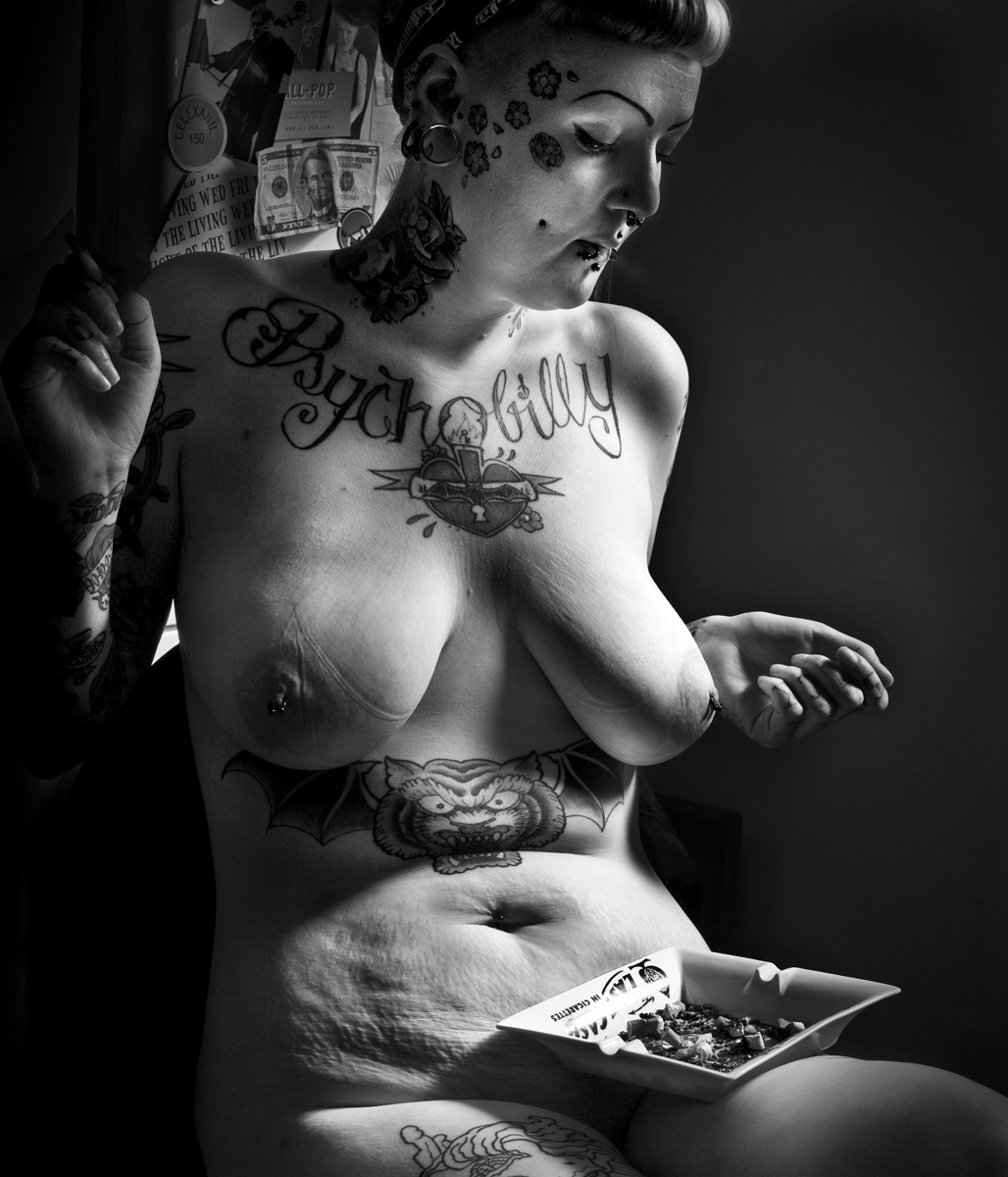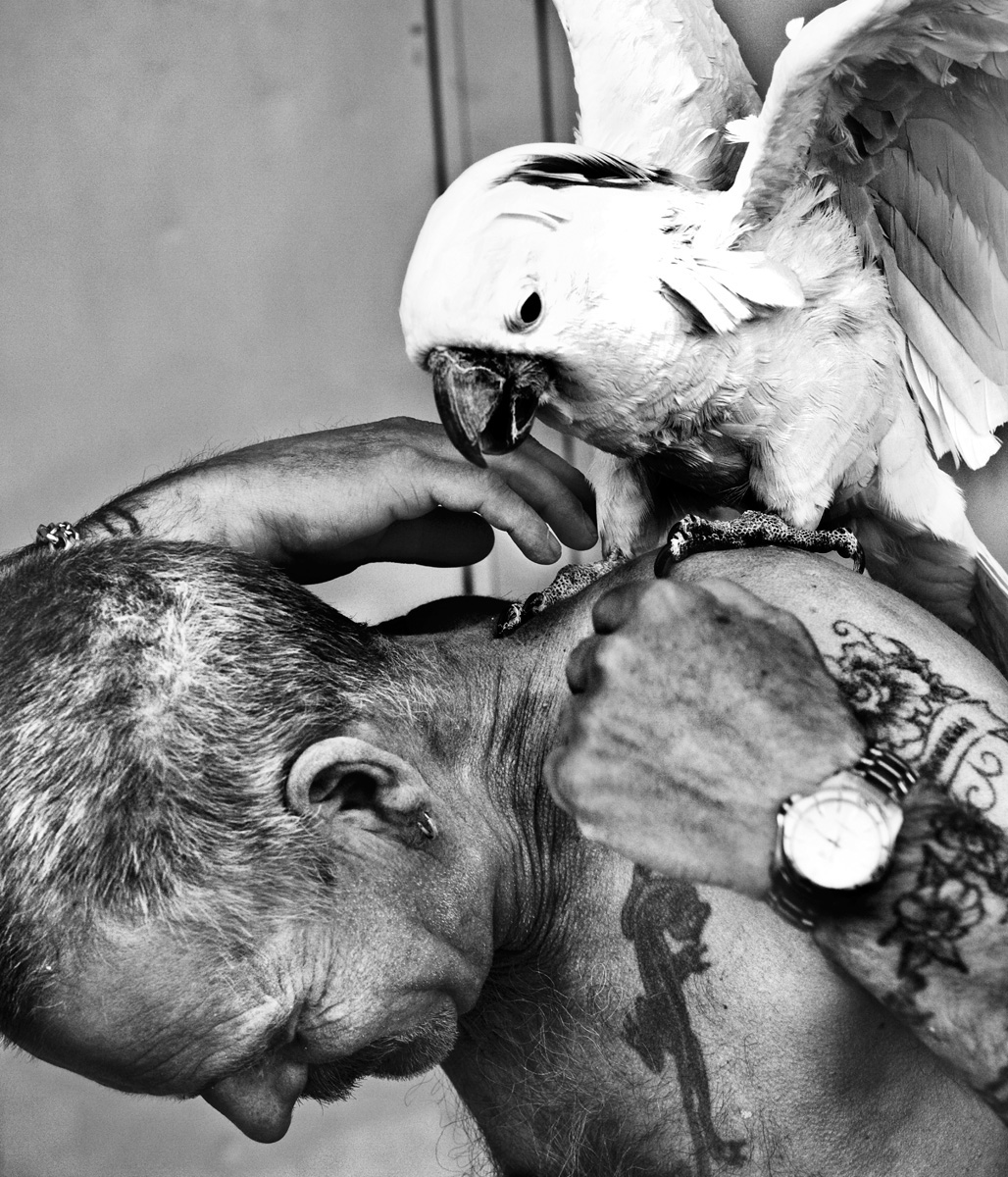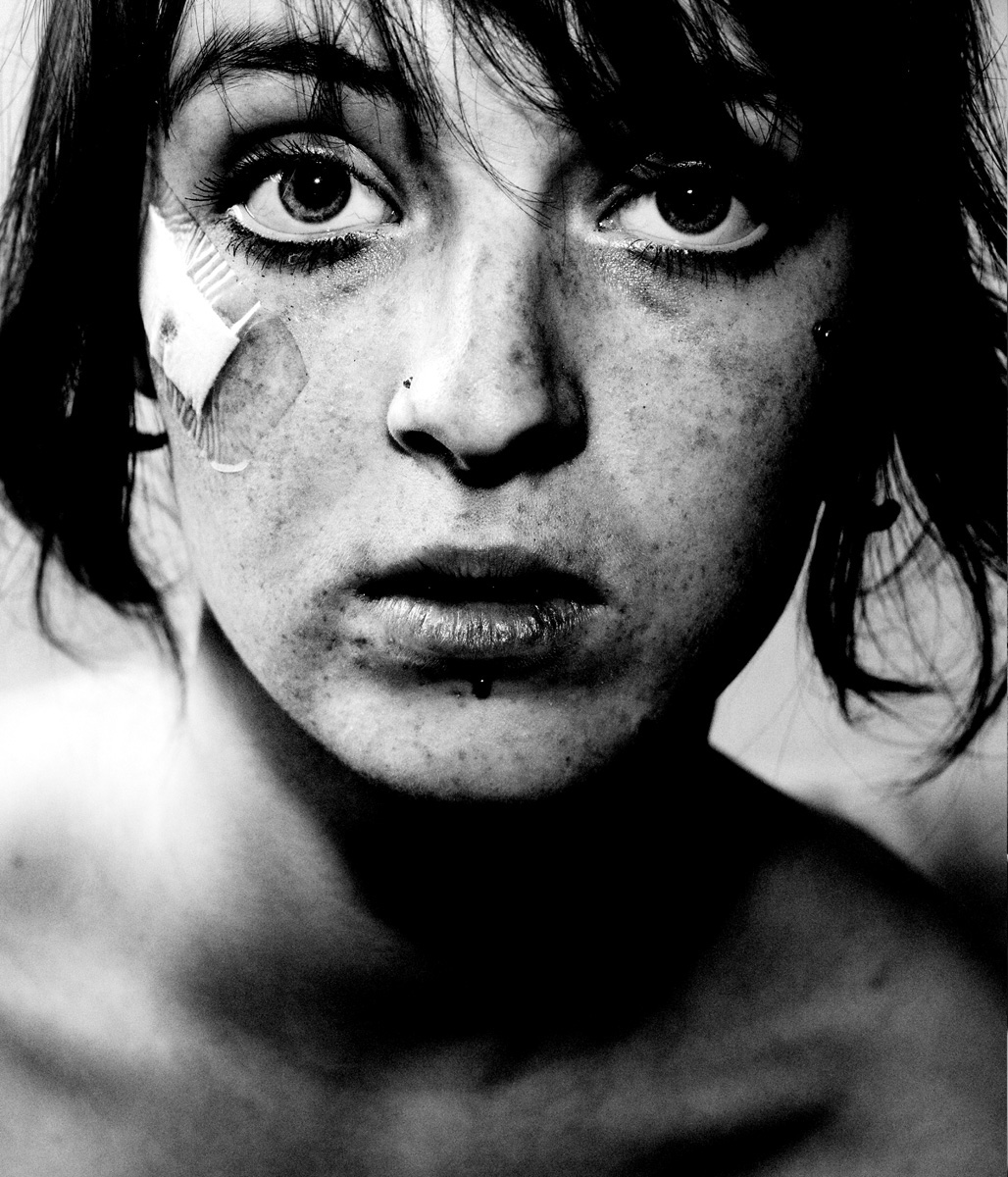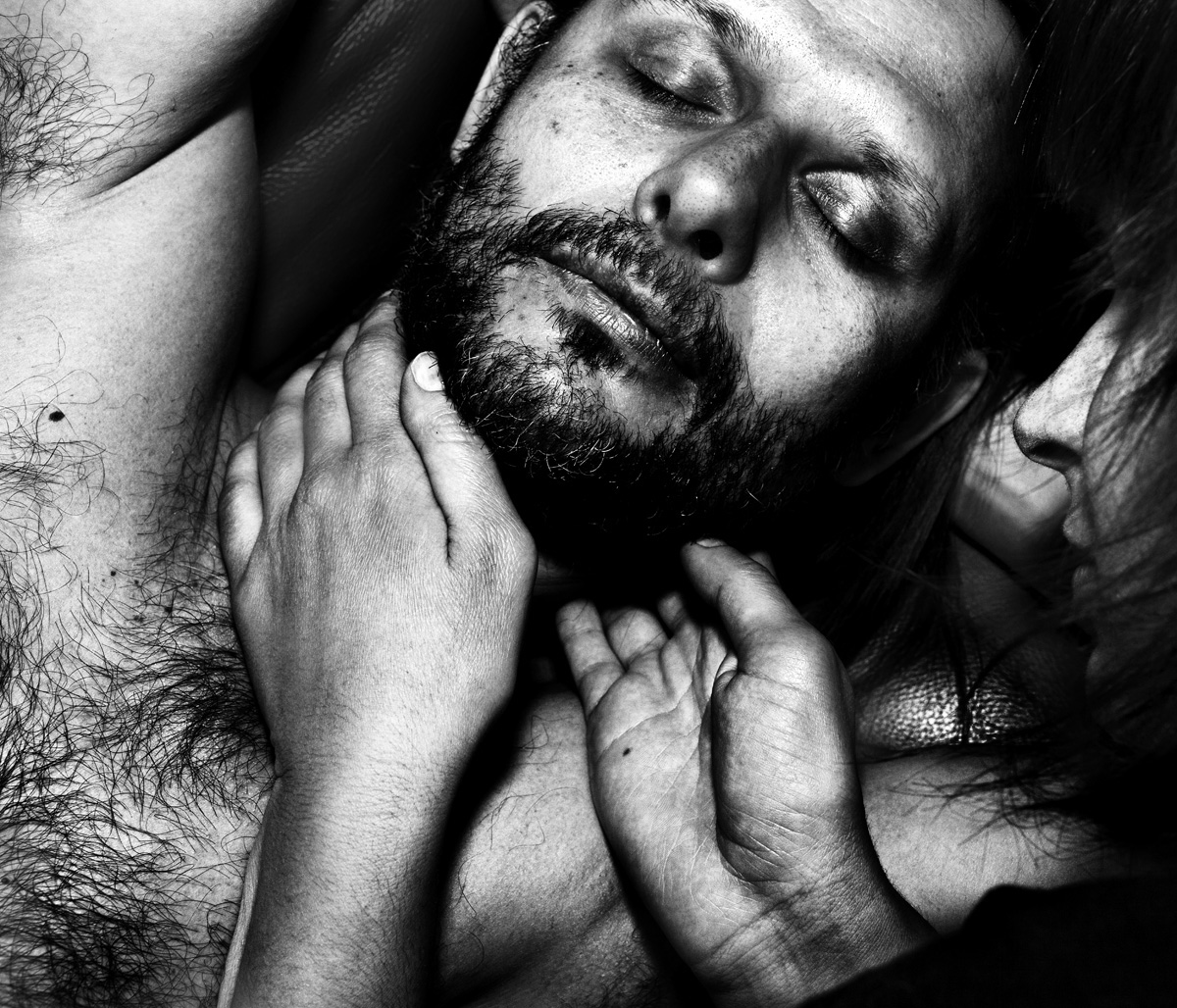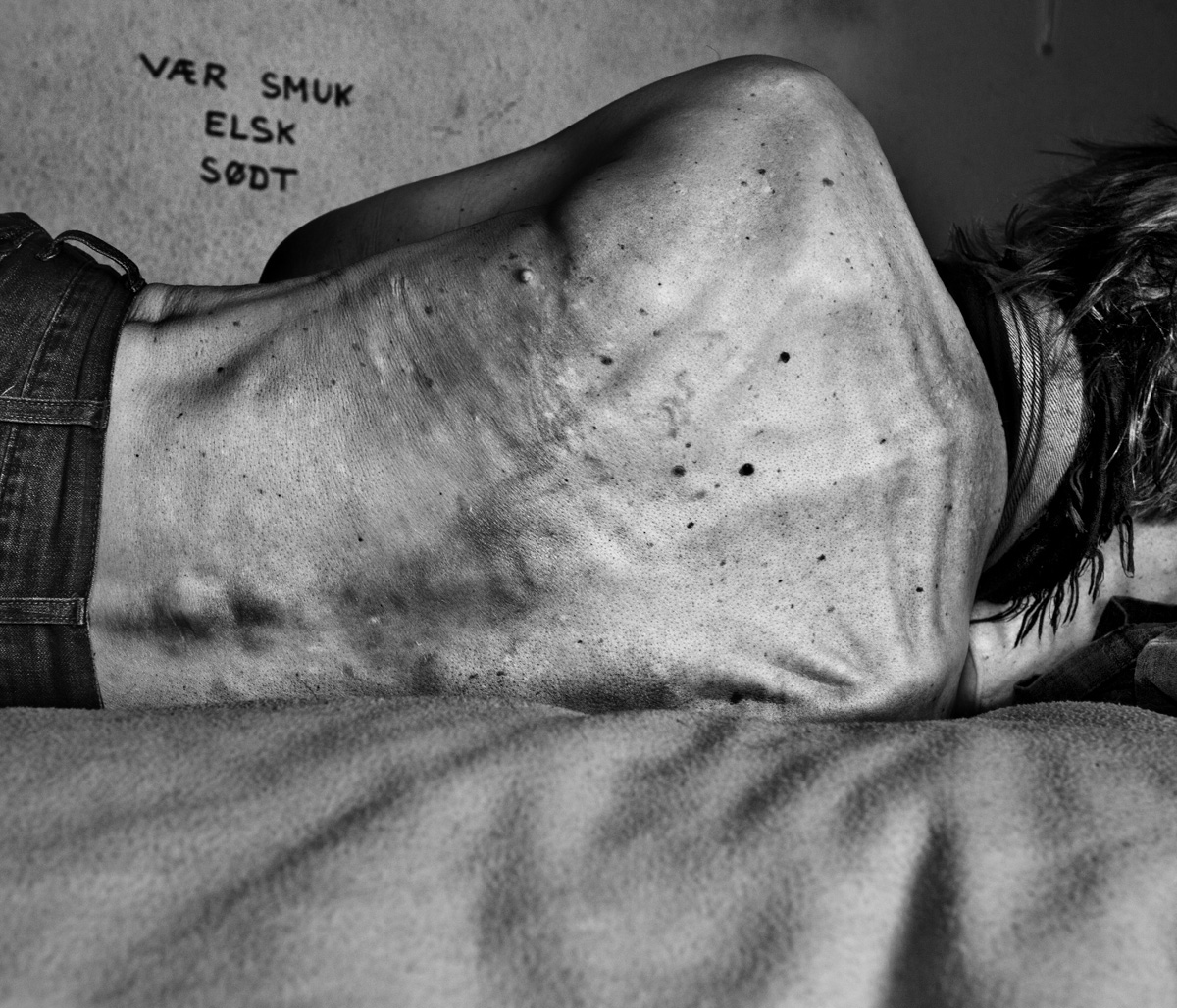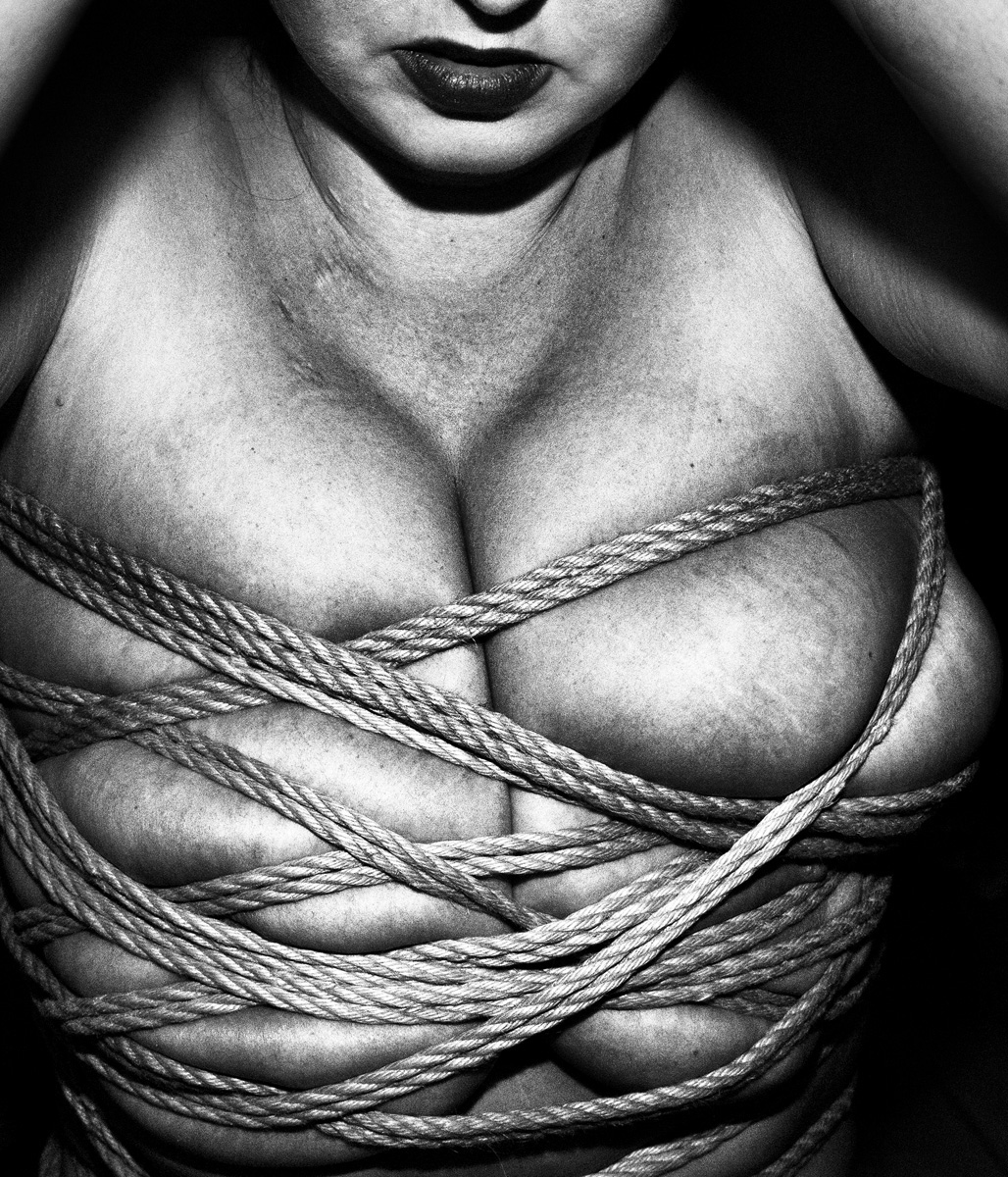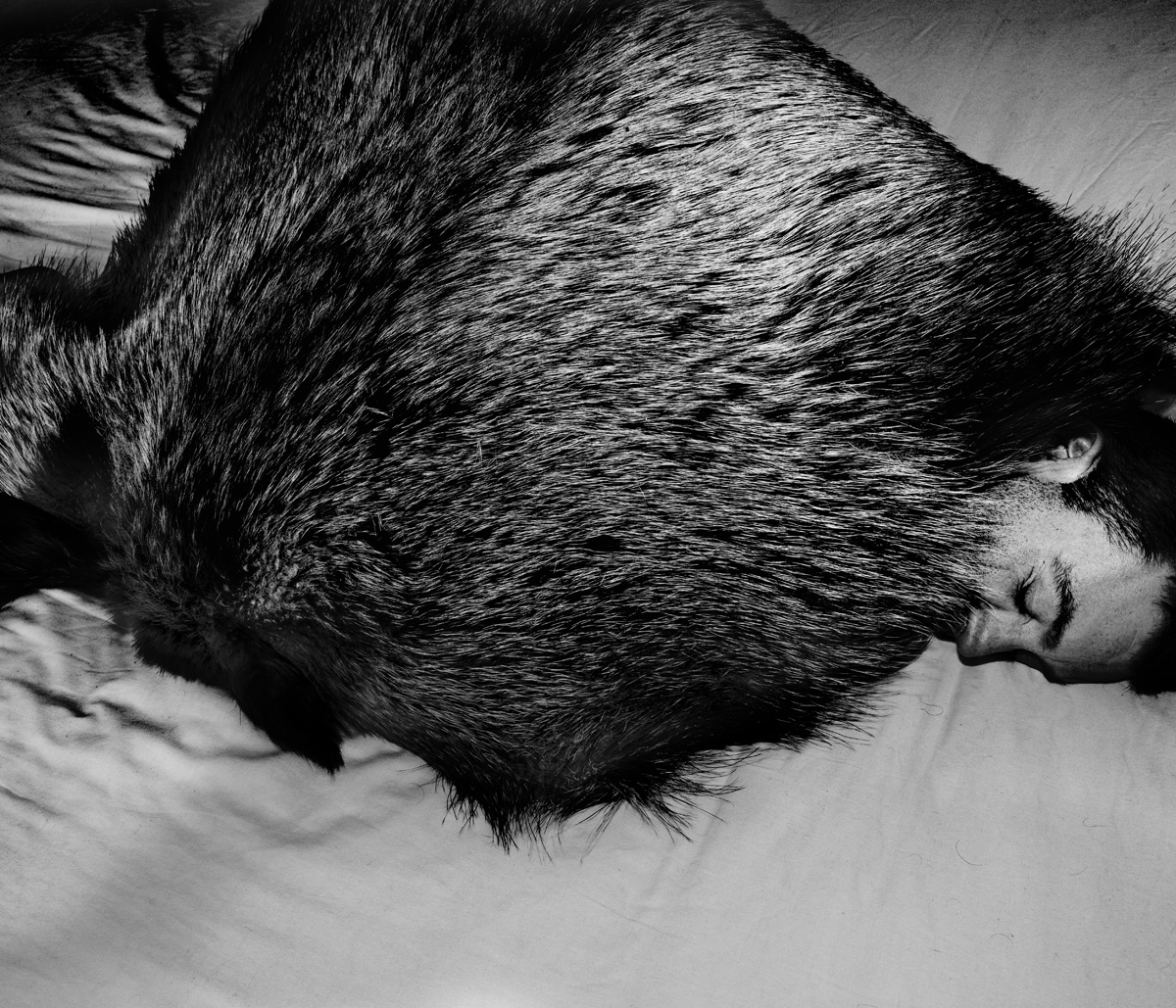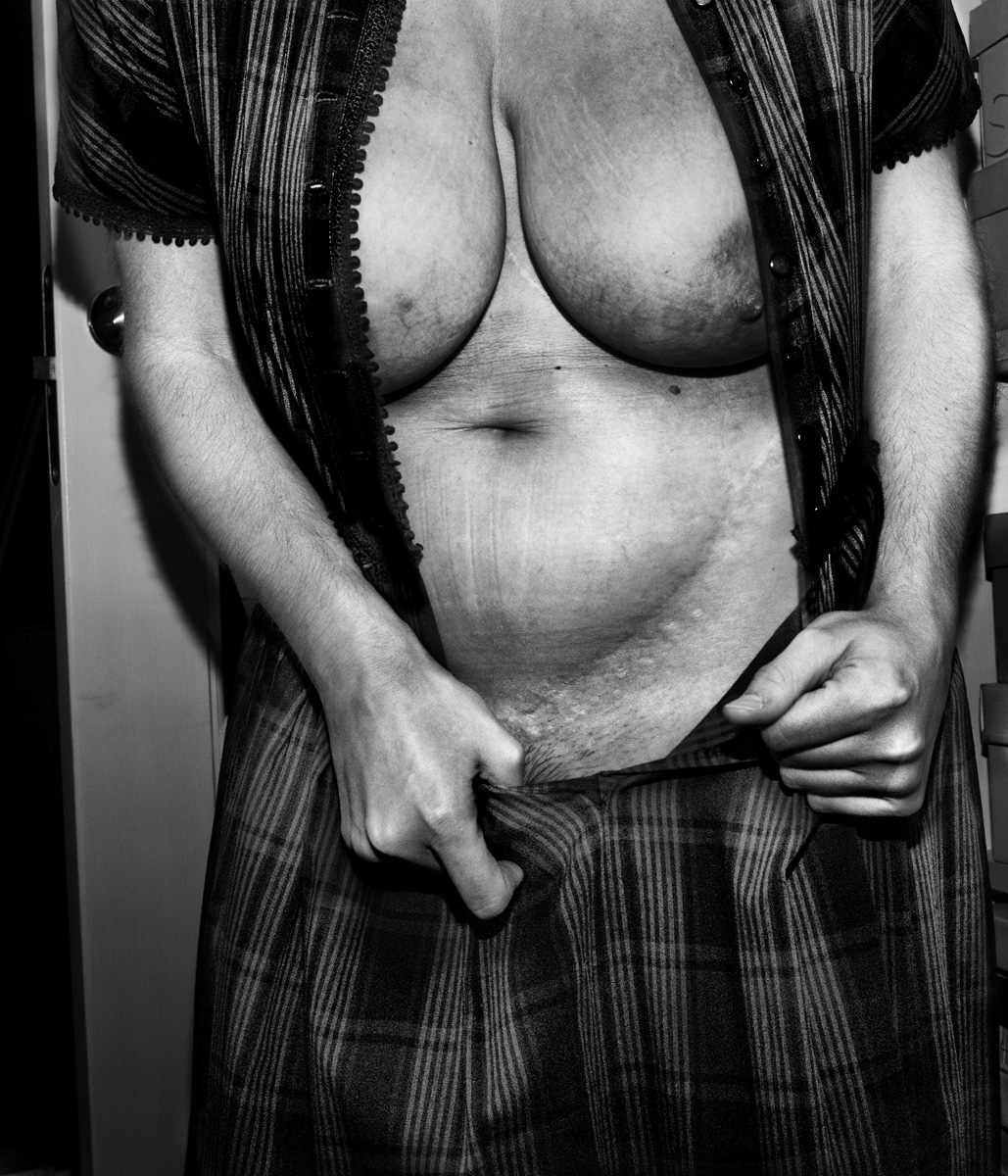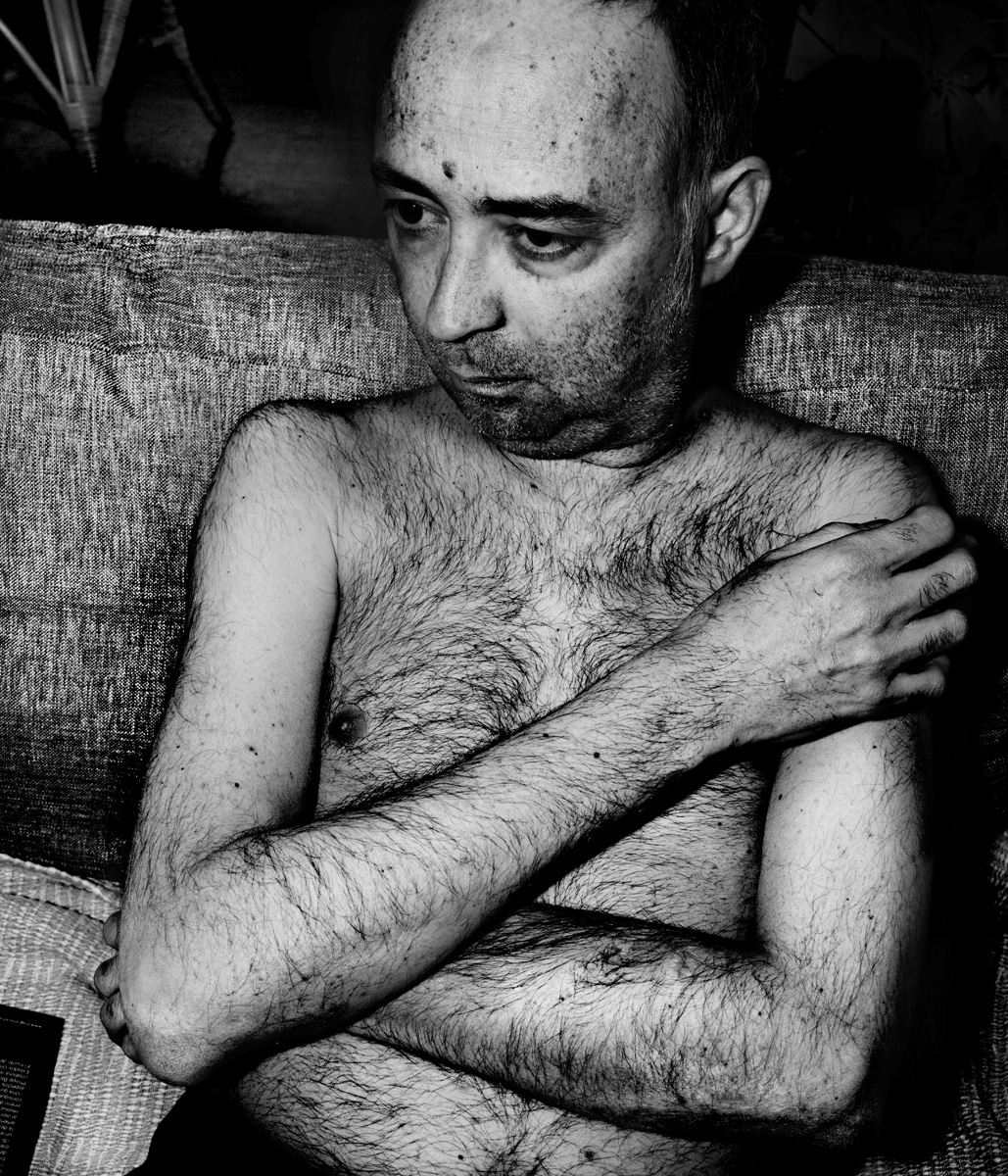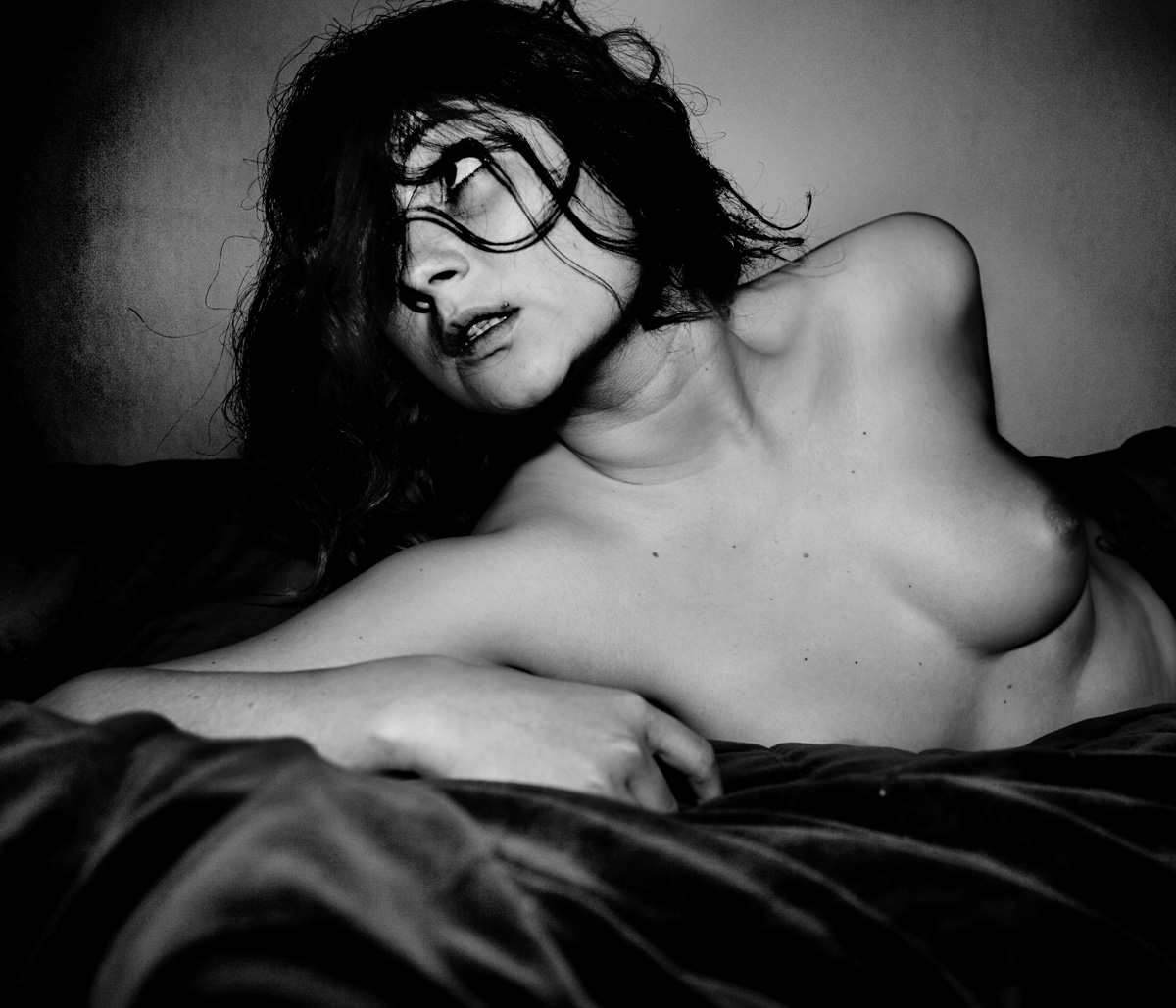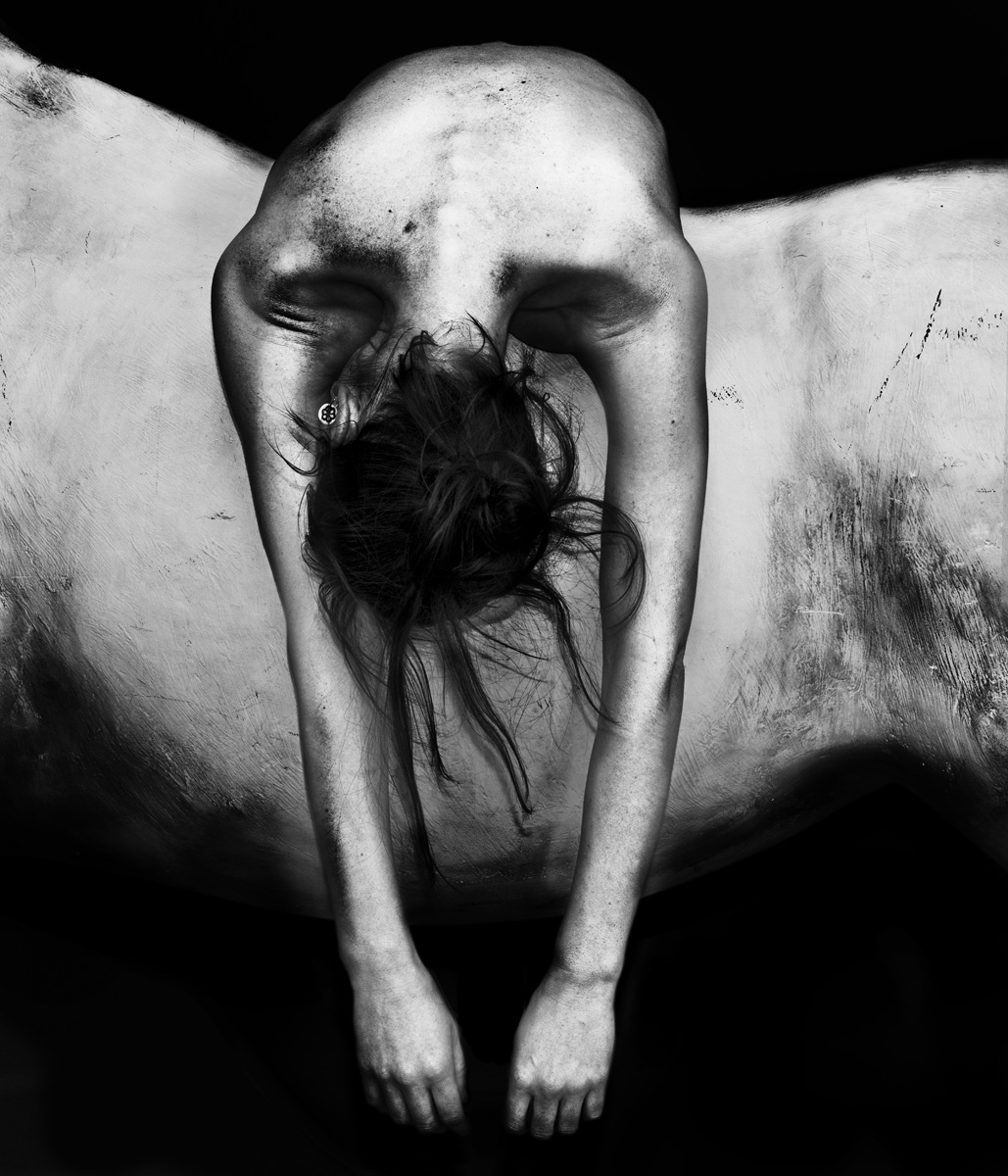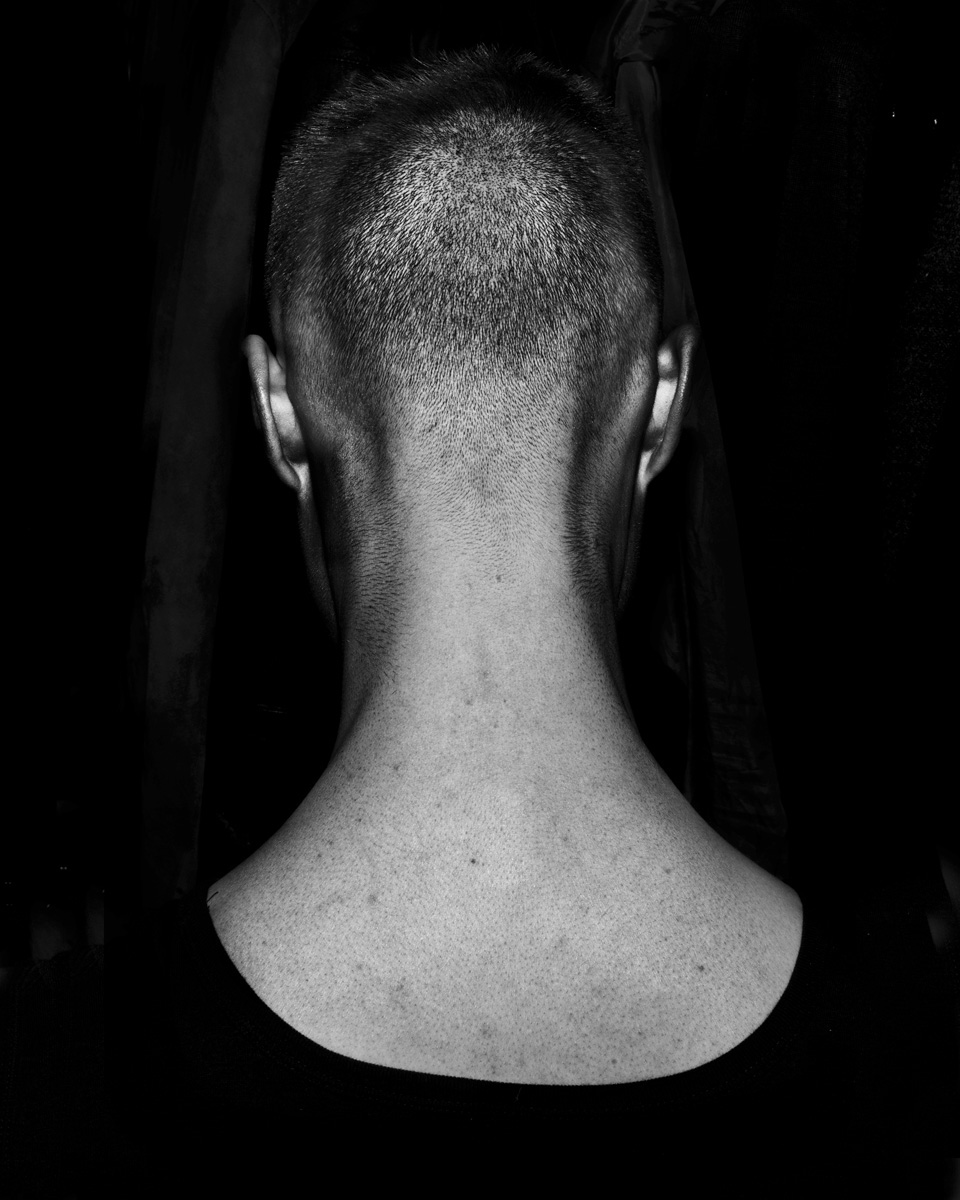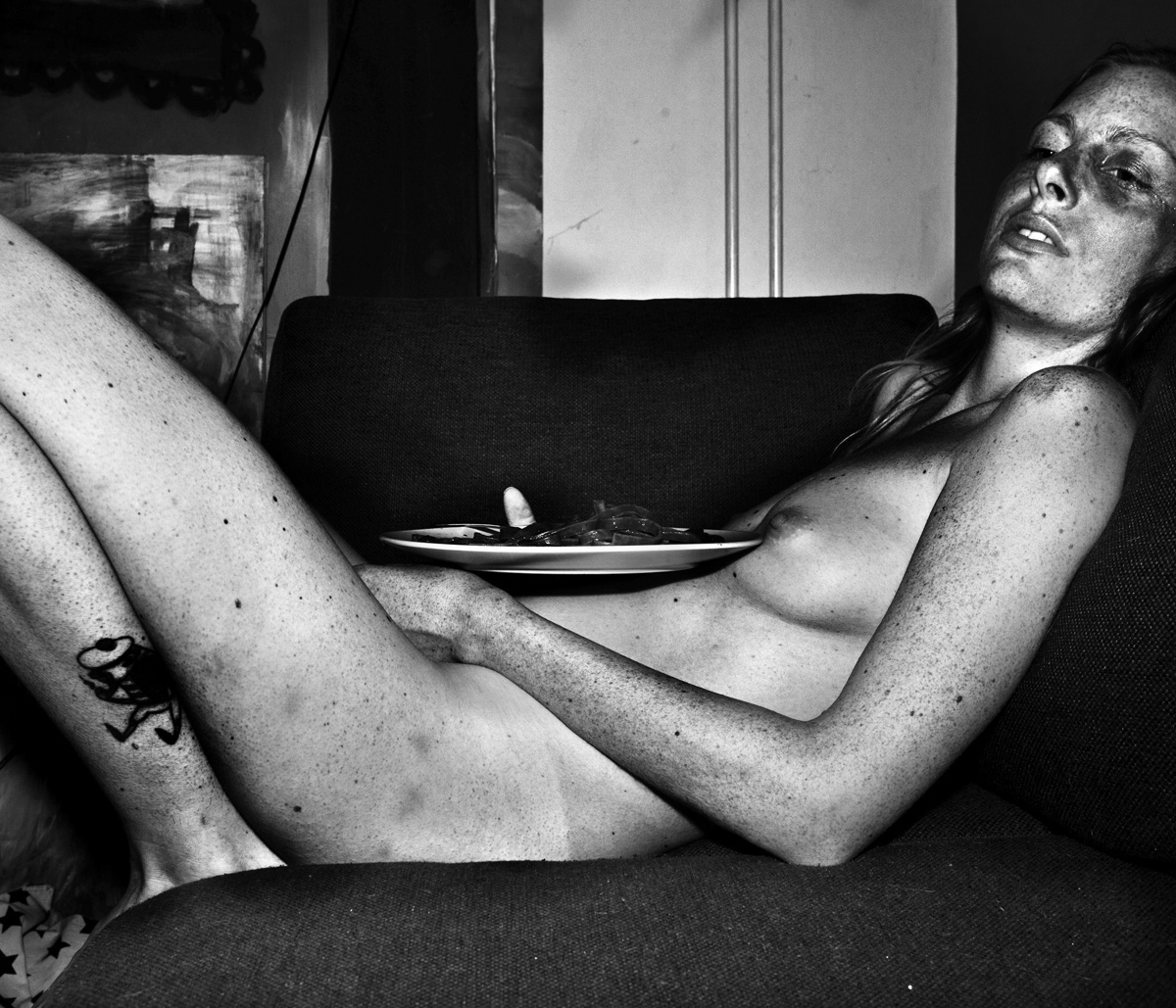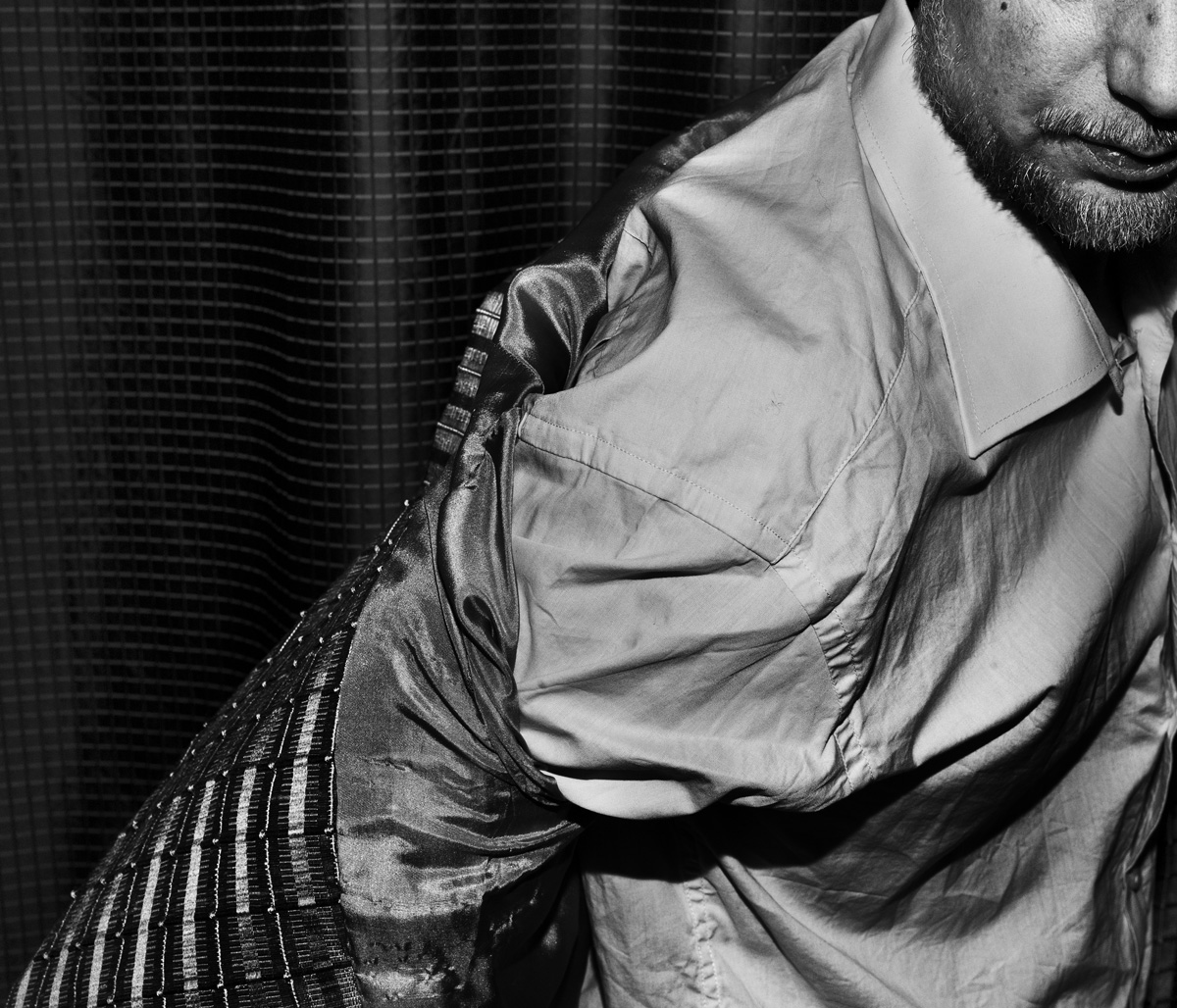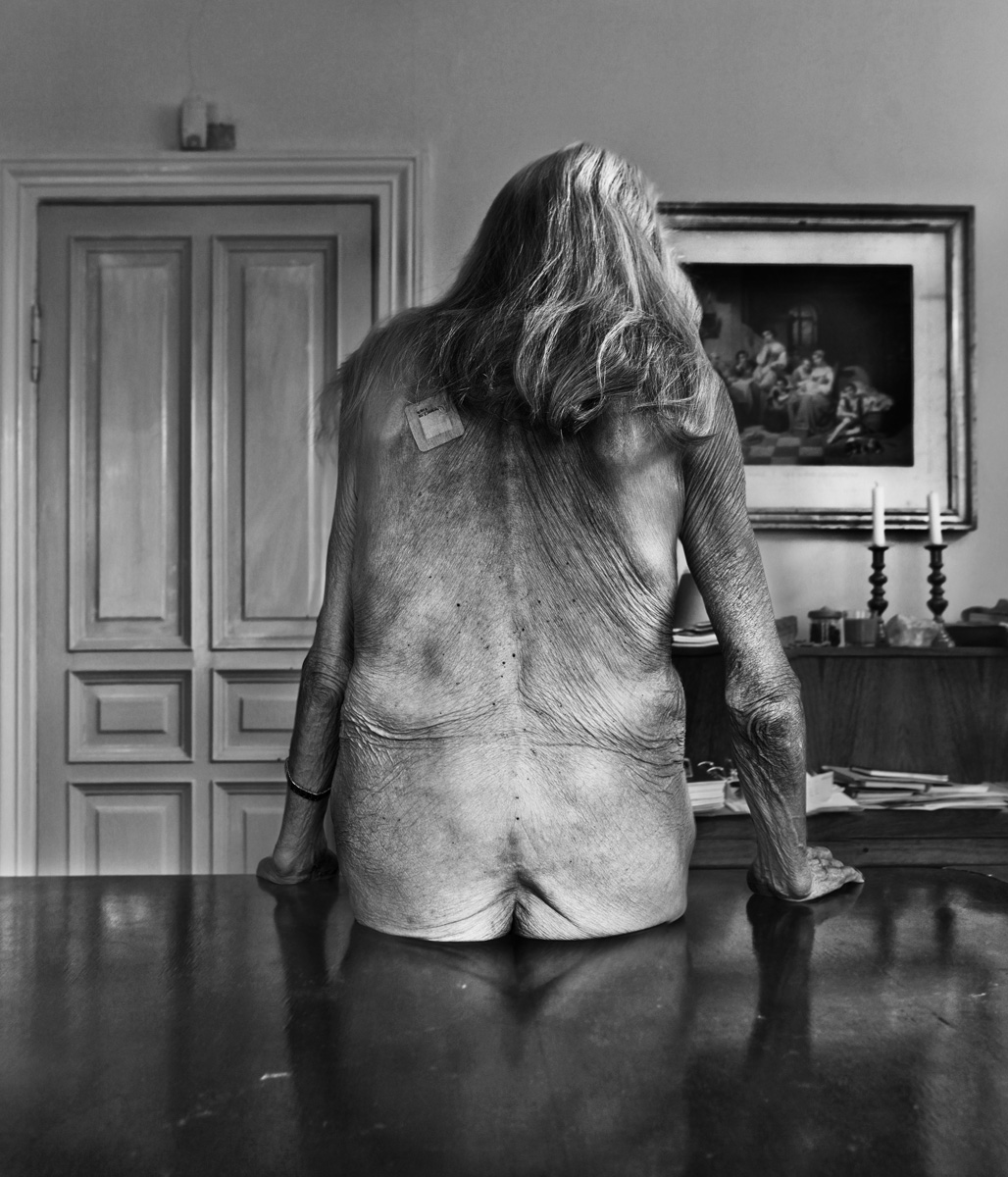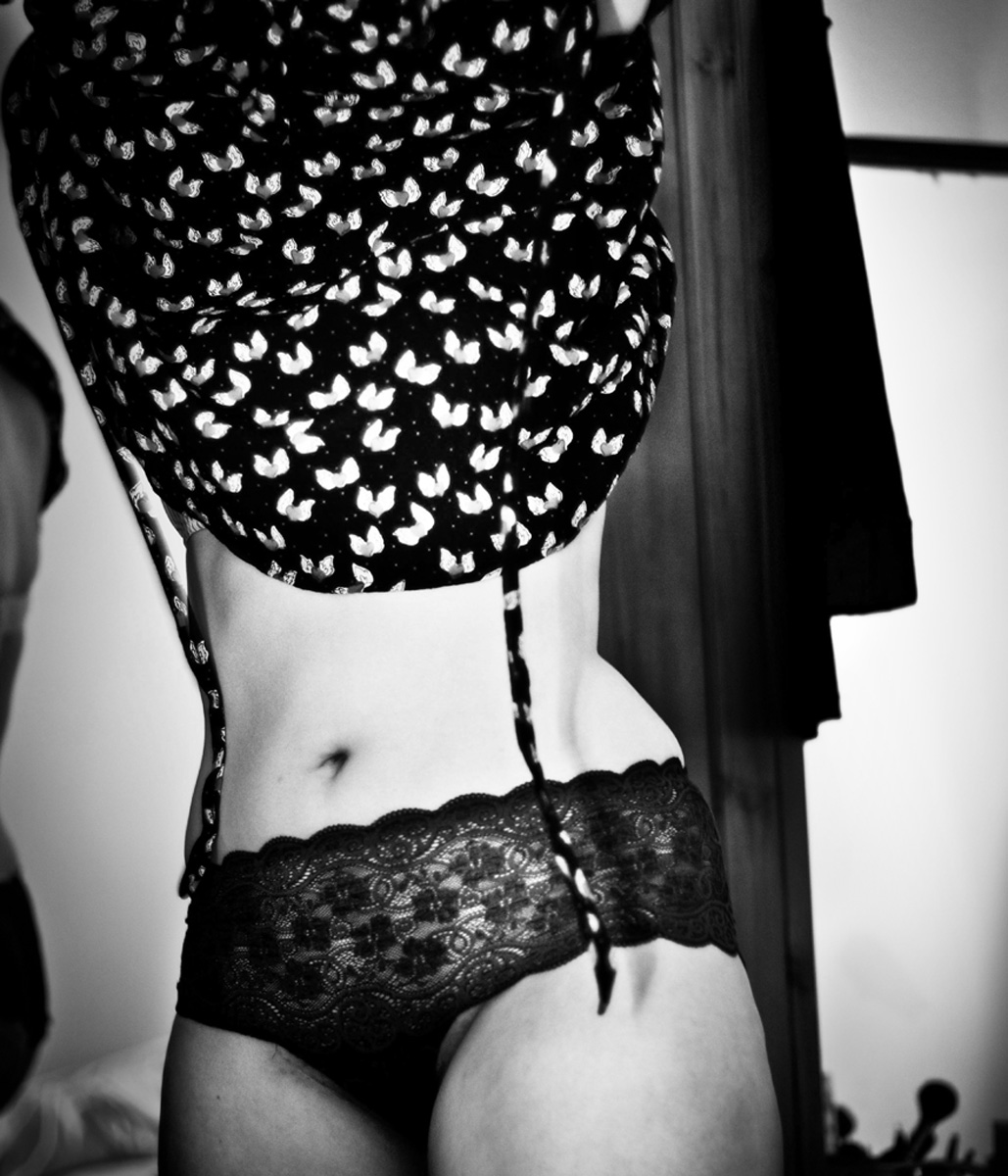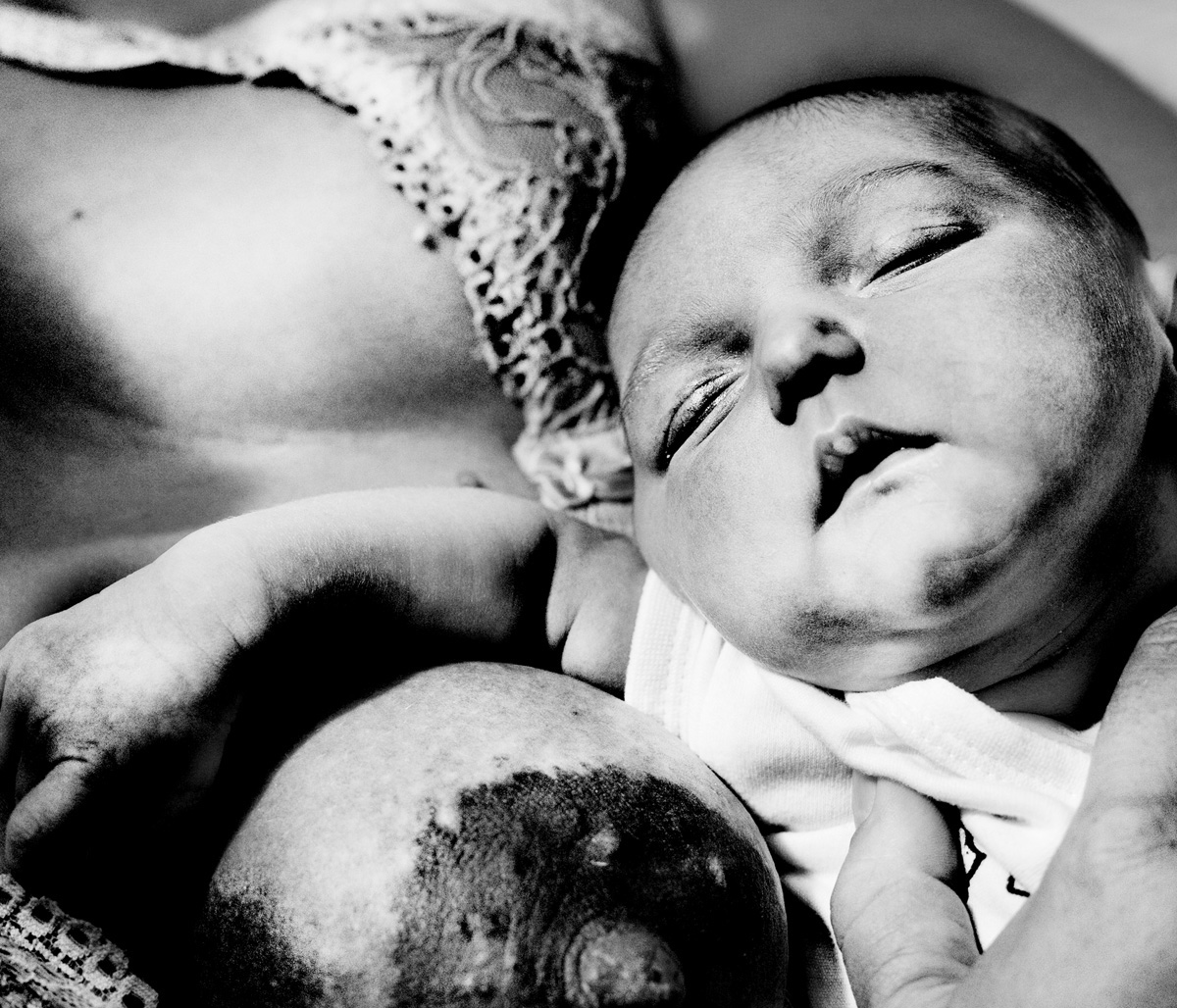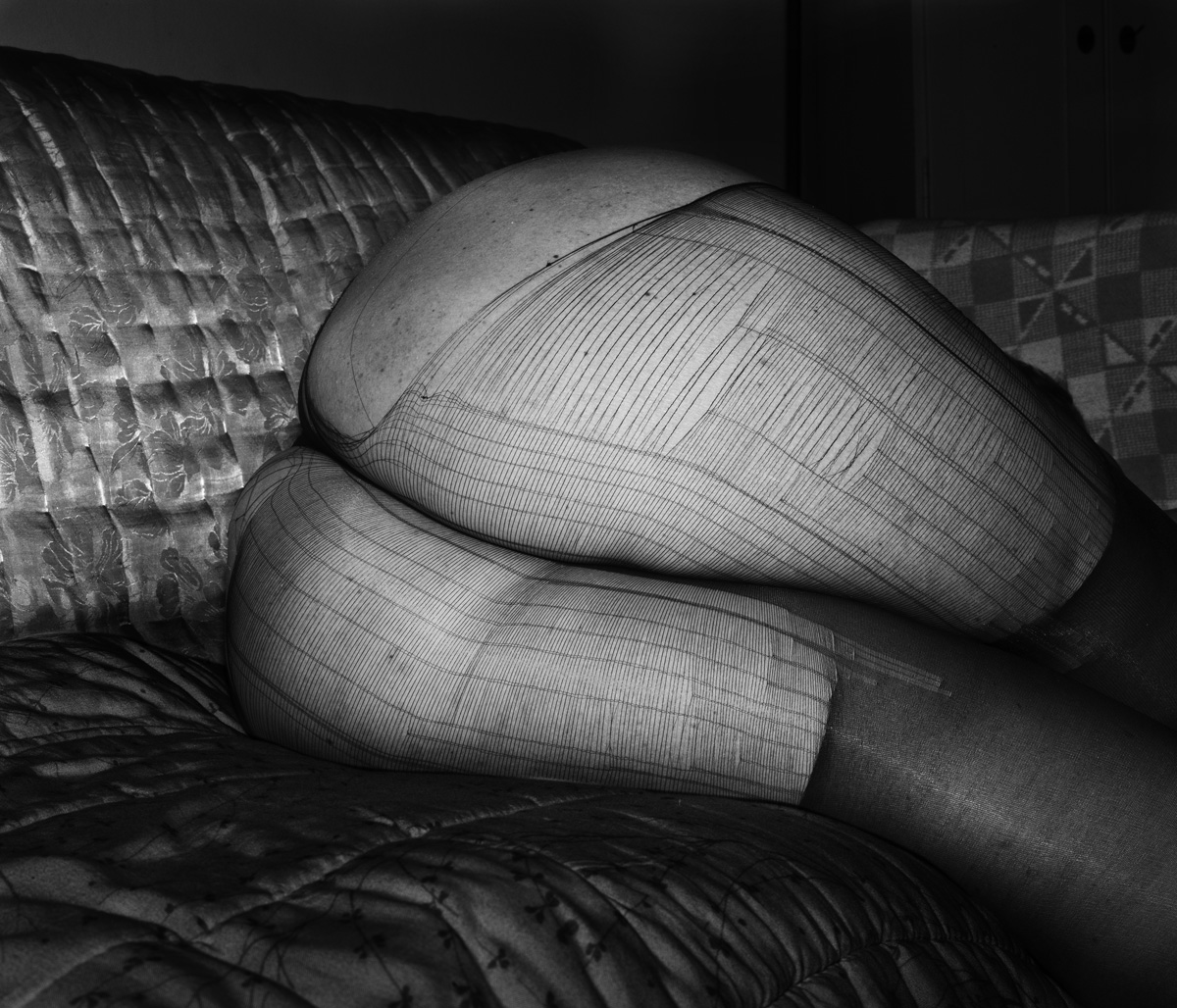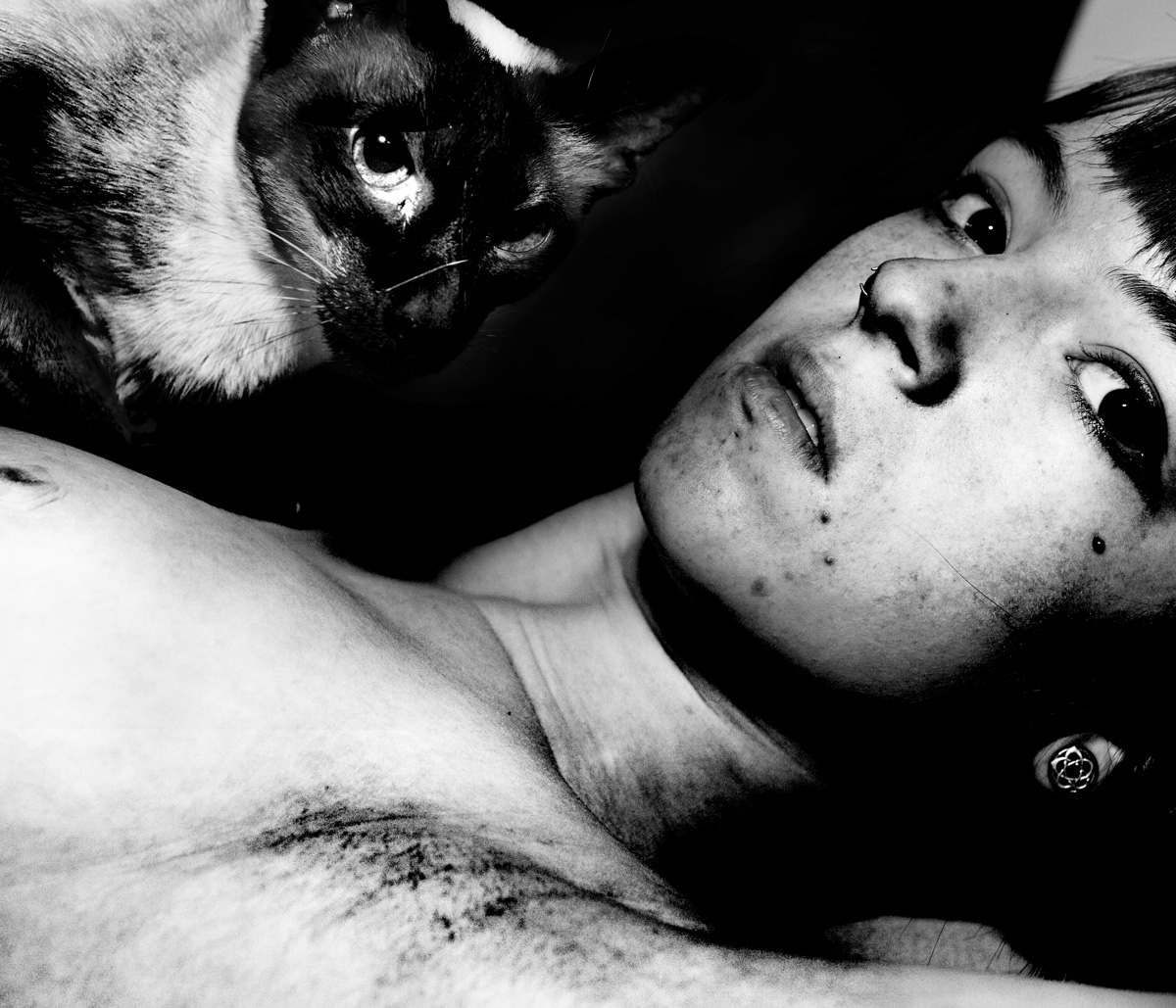A great deal of my photography starts from a desire to describe the individual person in settings where he or she is alone and private. The point of departure is not a pose but to take pictures of peoples lives with all the little things we each do. A kind of active portrait photography.
It is important to me to capture each person as immediately as possible and without filter, and thus I prefer to photograph my subjects in settings or during activities where they are undisturbed by others. I also do a different kind of active portrait photographs, where the surroundings conversely take an active part, and where I seek to capture the reaction to changes we as humans experience when we leave our most private spaces. How we change in the interaction with others.
My strongest inspiration is inextricably connected to my first intimate encounter with the photograph, which was when I as a child received the book ”American Pictures” by Jacob Holdt. The book depicts a journey through the USA of the Seventies, and the book shows how extremely present and attentive his meetings with the Americans were. Even today this book is to me a strong and candid example of how to depict and work with people under their own conditions of living. That I myself would end up as a photographer many years later never entered my mind at that time, but the strong impressions of your childhood are never forgotten.
Strong impressions form the motive power of my work. Behind a strong impression always lies an interesting and often not told story. Of course the strong impressions can be seen on the news, where we daily watch pictures from global hot spots or places hit by sudden disasters. These pictures any photographer can chase in competition with other photographers with access to the same news channels. But apart from the spectacular and crisis hit places I actually believe that strong impressions can be found around all of us. My morning bike ride to take my children to school is often cause of great inspiration. The story is right on your doorstep. It is just a matter of seeing it and of really seeing the people who are part of the tapestry of your daily life, and then of finding your angle and the courage to step across the boundary between yourself and other people formed by each person’s privacy sphere – even to those strangers who may at times seem dangerous and intimidating.
Six Degrees of Copenhagen is a textbook example of breaking this boundary. The photo project starts from the use of breaking of boundaries. First, I break a social boundary by approaching people on the street and invite them to participate. At the same time I need to get the participant to break a boundary in inviting me and my audience (personalised by my camera) into their most private chambers. Finally, the audience has to break the boundary of – via the medium of the photography – suddenly becoming so intimate with a stranger’s world that they sometimes become virginal on behalf of the subject.
The way I work is that I approach someone I don’t know, be it on the street, in a supermarket or at a social event. I ask if I can portray them in their homes and then I pay them a visit. The visit usually lasts a couple of hours or however long it takes to break the ice and get just the right shot of the subject. I then ask them to pass the torch so to speak and recommend someone in their own network that I can portray in the same way.
I got the idea from the theory of six degrees of separation – the notion that all people on Earth are connected in the sixth degree. There is nothing scientific about my work, though, and I’m not trying to show the extent of human networks. It is a way of work that magically enables me to travel through a city and meet its inhabitants. I’ve come across all walks of life, old and young, and I have seen many different ways of life. If you meet people without prejudice and with a lot of curiosity it really is amazing how willing they are to share their experiences and the insights they’ve gained. In that way my work is a journey into the minds and lives of other people.
It is actually remarkable how expansive and broad-ranging most people’s networks are. My impression is that by far most people have a great variety in the types of people they keep in their circles of acuaintance. While I have been shooting Six Degrees of Copenhagen I have encountered several participants from the highest levels of society,
with huge incomes and responsibility for the daily bread and butter of numerous people, who could point to personal acquaintances on the bottom rungs of the societal ladder. People with no income or roof over their heads, with substance abuse and crime as part of their daily lives. What provokes thought is how stark the contrast is to the networks we usually use to paint portraits of ourselves. Our designed networks – such as Facebook and LinkedIn – typically show how many funny, professionally important and interesting people we are connected to. But despite the sheer numbers of individuals in designed networks, the lack of diversity is pervasive.
When I bike to school and kindergarten with my children in the morning, we pass a hairdresser’s salon, which is visited daily by local residents who for half an hour put their lives, or rather their heads, in another person’s hands. This fascinates me and is developing into a project, so recently I have visited different hairdresser’s salons to capture the meeting where we let other people get very close.
A third project I am working on is a book project about being an inmate in a prison. The Inmate project takes its point of departure in a profound curiosity regarding the consequences of being punished with long-term imprisonment to someone’s life. The project focuses on the life conditions of long-term inmates in Danish prisons. What do inmates think about their own lives, their relationships with people both inside and out of prison, and what kinds of hopes and expectations do they have about the future? The project will be using a combination of interviews, portraits and picture documentation of the everyday life in Danish prisons to tell the story of inmates. The aim is to publish a book with ten interviews and approximately 75 pictures. I’m looking into crowd funding possibilities, and am also considering making an electronic version that would keep production costs down and provide a possibility of layering information.
Through the Danish Prison and Probation Service I have been granted access to the Danish prisons. In some prisons I have only been allowed to take pictures of architectural details. In other prisons I have been escorted around by prison employees, who have opened and locked doors for me, and walked me through the different parts of the prison. In yet other places I have been permitted to move around freely, and take all the pictures I wanted, as long as I got permission from the inmates first. In total I have been granted a much higher degree of access than I had ever dreamt of when I made the first phone call in order to get into prison.
But why on Earth, one might ask, am I giving criminals that have harmed fellow human beings a chance to express themselves? And why would I offer them to have their portraits and pictures of their everyday life grace the pages of a book, and even do so in a book looking all luxurious with big pictures? The answer is simple, really: Because their voices to a large extent are missing in the public debate. There are black holes, so to speak, in the public’s map when it comes to the realities and consequences of incarceration. What is it like? Really?
In Denmark, imprisonment is largely seen as punishment, but with an agenda of offering possibilities for resocialization, and only severely hardened or mentally ill inmates have little prospect of ever getting out. However, reality is that resocialization is difficult, even in a social-liberal welfare state like Denmark. The question then is: if prison breeds more criminals, how does society benefit from locking people away? It is my ambition to start a public debate about the relationship between justice, punishment, revenge and resocialization that will hopefully engage both the public and the politicians. Each year, so many families live with the consequences of crime. Children of criminals and victims alike are growing up with the effects of crime and punishment. So we’d better make it count!
And to return to the relationship to our personal networks and the use of them, my work inside the prison walls has shown me that much crime is committed by individuals whose networks have been insufficiently present. A lack of care and love early in life, but also a lack of engagement from the personal circle of acquaintances. Instead of stepping in when people are in trouble, we turn our heads away to avoid becoming a part of the problem. A lot of human misery could be avoided if only we dared to get involved and show some interest in the lives of our fellow human beings! [Official Website]
